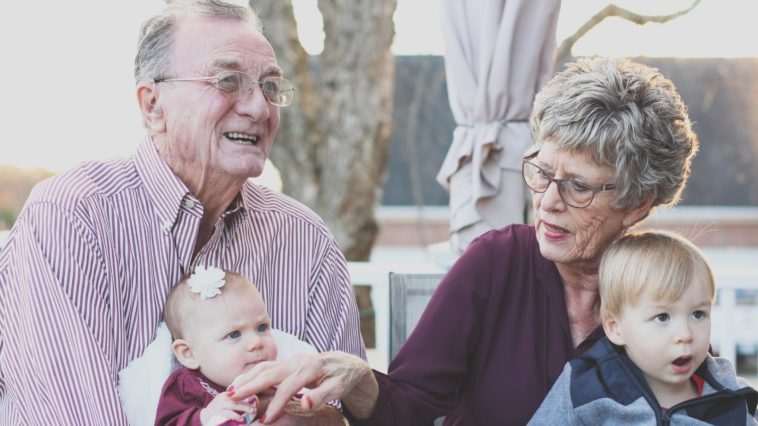You will be amazed at the skills your baby learns and the way she develops in her first year of life. It’s hard to imagine your fragile newborn becoming a robust one-year-old, but you will be surprised how quickly this happens. In this chapter, I hope to give you a guide to your baby’s development from newborn to twelve months in three-monthly stages. You will find that your baby is an individual and may not do all the things mentioned in each particular section at exactly that time.
It’s very easy to become worried by comparing your baby’s development with other babies. Parents can often get hung up on whose baby sleeps through the night, or begins teething, crawling, walking or talking first. It’s important to remember that each baby and family is different, and your baby’s progress is unique to him. Try not to worry if your baby seems to lag behind, but if you are at all concerned speak to your health visitor or doctor.
Your Newborn Baby
Your Baby’s Appearance
Many new parents are quite surprised to find that their newborn baby doesn’t look as pretty as they expected her to. If you feel this way, don’t worry, as she will gradually ‘unfold’ and begin to look more like a chubby baby in a magazine.
Some newborn babies have quite a misshapen head. This can be due to a long or difficult delivery, or lying awkwardly in the womb. Your baby will have two ‘soft spots’ or fontanelles on the top of his head, which have given his skull flexibility during birth. The posterior fontanelle at the back of his head is a small opening that will close up by six to eight weeks of age. The anterior fontanelle is larger, and you can often see it pulsing at the top of his head towards the front. This will close by the time he is two years old. It’s important to handle your baby’s head gently, as the fontanelles are very delicate.
Your baby’s nose may initially look quite squashed, her eyes may be puffy and her ears may look bent. You will be surprised how quickly these will sort themselves out, but if you have any concerns after a few weeks, speak to your health visitor. You may notice small pink marks on your baby’s forehead, neck or eyelids; these ‘stork marks’ will fade in a few weeks.
Your baby will probably have her eyes closed a lot of the time during the first couple of weeks of life. Most babies are born with blue-grey eyes; however, if they are going to change colour, they will do so by the time she is six months old. Your baby may have a greasy film on his skin; this is called vernix and has protected his skin in the womb. Vernix is usually greyishwhite in colour and odourless. You will often find it under his arms and in any creases in his skin, but it will come off gradually as you bath him over the next couple of weeks. Your baby’s skin may also be hairy, which is quite normal. Any hair will usually rub off over the first few days of life.
You may notice that your baby’s genitals are quite red and swollen, and both boy and girl babies may have swollen ‘breasts’. This is due to the mother’s hormones passing to the baby during birth, and will settle down quickly. Your baby’s umbilical cord will be a greyish colour and will have a clip on it. The cord will dry up and shrivel quickly and usually drops off within five to ten days.
Your baby’s hands and feet may look quite blue and feel cold in the first week to ten days, but this is nothing to worry about, just her circulation settling down. It is a good idea to put socks or bootees on her feet to keep them warm.
Reflexes
All babies are born with a sucking reflex, and are able to swallow too. Your baby will also have a natural instinct to turn his head to the side when he wants food; this is called the rooting reflex. When your baby is rooting, his head will turn to the side and he will open and close his mouth. If you put your finger in your baby’s hand, she has a grasping reflex that makes her curl her fingers around yours and hold on.
If you want to lift her arm up, for example to put her cardigan on, let her grasp your finger and she will lift her arm as you gently pull her hand upwards. Up to the age of six weeks, your baby has a stepping reflex, so that if she is held upright above a firm surface she will make stepping movements with her feet.
If your baby feels unsupported when being held or put down, for example to be changed, he may throw out his arms and legs. This is called the startle or Moro reflex. If this happens, make sure to hold your baby securely and put him down gently.
Newborn Checks
Shortly after your baby is born, the doctor or midwife will weigh her and measure her head circumference, and maybe her length. The doctor or midwife will thoroughly examine her, listening to her chest, checking her joints, organs and genitals and making sure she has all the newborn reflexes.
When your baby is about six days old, your health visitor or midwife will take a few drops of blood from his heel for the Guthrie test. This tests for thyroid deficiency and phenylketonuria, which is a rare deficiency in body chemistry. The test is done as a normal procedure, and although your baby won’t like it much, he will soon forget if you cuddle and comfort him after the heel prick. If you are breastfeeding, let him feed from you while the midwife takes the sample.




